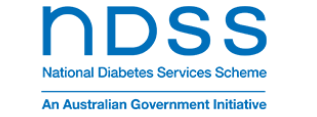Schools have a legal responsibility to keep all students safe, including those who need medical support during the school day, such as students with type 1 diabetes.
This legal responsibility is known as a duty of care. For schools, this means taking reasonable steps to prevent foreseeable harm to students, including health-related risks.
Types of legal responsibility
Schools must meet several legal obligations when supporting students with type 1 diabetes:
Duty of care
Who holds it: All school staff
Can it be passed on? No
What does it mean? Staff must take reasonable steps to prevent harm to students.
Example: Noticing and responding to signs of low or high glucose level, making sure students have access to their diabetes equipment and snacks or following the student’s diabetes action and management plans.
Non-delegable duty of care
Who holds it: The school
Can it be passed on? No
What does it mean? The school itself is always responsible for student safety, even if others are helping.
Example: A school is responsible for a student’s safety during an excursion, even if it hires an external bus company or casual staff to supervise the students.
Vicarious liability
Who holds it: The school
Can it be passed on? No
What does it mean? The school may be held legally responsible for the actions or mistakes of staff, especially if harm occurs due to poor training or incorrect diabetes care.
Example: A staff member gives the wrong insulin dose and the student is harmed; the school may be liable.
These legal responsibilities are alongside obligations under the anti-discrimination law, which protect students with disability, including those with type 1 diabetes, from being unfairly treated, excluded, or placed at risk.
What this means for schools
To meet their legal responsibilities, schools must:
- have clear processes in place for managing students with diabetes
- train the right staff to support students safely, including with insulin administration (if needed)
- communicate clearly with all relevant staff about what to do and who is trained
- plan for emergencies, including what to do if a student has a low (hypoglycaemia) or high (hyperglycaemia)
- keep up to date with diabetes technology and how to respond if a device (like a pump or continuous glucose monitoring device) fails.
Duty of care: What schools must do
Schools have a non-delegable duty of care, meaning the school is always responsible for the safety and wellbeing of students, even if tasks are shared with others.
- Know the law – understand their legal responsibilities under Australian education and disability law.
- Keep staff informed – clearly communicate to all staff the needs of students with type 1 diabetes and any agreed supports or adjustments.
- Support staff awareness – make sure all staff understand their duty of care and how it applies to students with diabetes.
- Provide basic training – ensure all staff complete at least Level 1 Diabetes in Schools training so they can recognise when a student needs help and respond in an emergency.
- Assign trained staff – identify staff willing to take on a designated role and complete additional training to support day-to-day diabetes management (like monitoring glucose levels or giving insulin). Additional training would be Level 2 and if required Level 3 Diabetes in Schools training.
- Work as a team – build strong, ongoing communication between staff, families and health professionals.
- Collaborate on adjustments – involve parents, carers, and students (where appropriate) when agreeing on reasonable adjustments to support the student’s full participation at school.
- Check medical changes with health teams – confirm any suggested changes to diabetes care with the student’s health professional(s) to ensure safety and legal compliance.
- Ensure safe storage of medication – set up appropriate access and storage of diabetes medications, balancing the student’s needs with overall school safety.
This duty cannot be passed on. Even when other people help provide care, the school remains legally responsible.
Reasonable steps schools might take
What is “reasonable” will depend on the school’s circumstances like its size, layout, how many staff and students there are, and how many students have diabetes.
Some examples of reasonable adjustments include:
- making sure each student with diabetes has a current diabetes management plan and emergency action plan
- sharing those plans with the right staff and keeping them updated
- having more than one trained staff member available in case of absences
- providing training through the Diabetes in School training program or by a credentialled diabetes educator or diabetes health professional
- ensuring trained staff are accessible when needed
- training staff to recognise and respond to signs of low or high blood glucose level
- creating safe systems for insulin storage and administration
- having clear procedures for using and safely disposing of sharps and unused or expired medication
- supporting students who self-manage, with backup in case they need help
- making sure staff understand how to use and respond to diabetes devices like CGMs, pumps, or apps and what to do if the tech fails.
Why these matter
For some students, the risks of a diabetes emergency at school can be serious and even life-threatening. These risks are often foreseeable, which means schools have a duty to plan ahead, not just react if something goes wrong.
By taking proactive steps and ensuring all staff are trained and supported, schools can:
- keep students safe
- meet their legal obligations
- create an inclusive and supportive school environment for all children.
For advice specific to your situation, please consult a qualified legal professional.
Disclaimer:
The content of this page is only intended to provide a general guide to the subject matter. The exact legal position that applies will always depend on your individual and surrounding circumstances. The information on this page does not in any way constitute legal advice and should not be relied upon as such. If you need legal advice, we recommend that you consult with a qualified legal professional for specialist advice about your specific circumstances.
Last updated: September 2025


